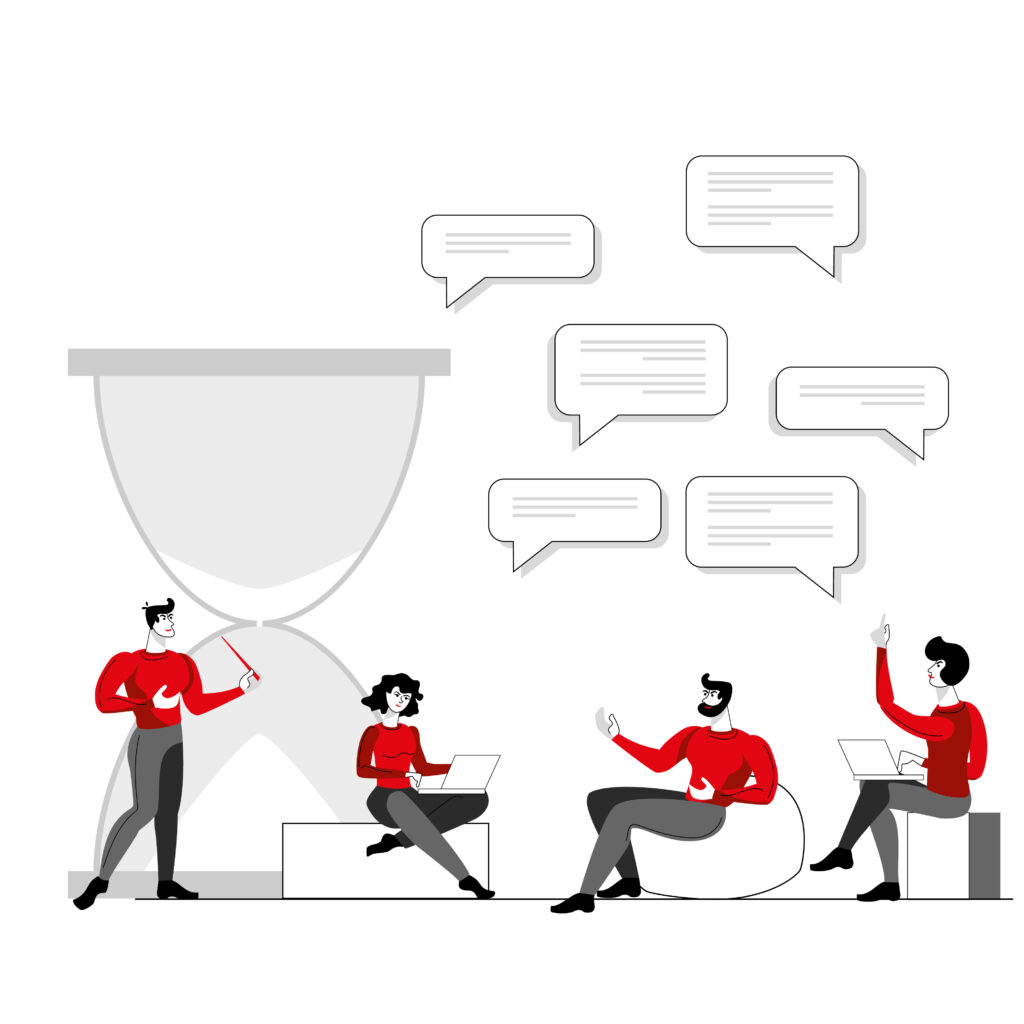Last updated on December 20th, 2024 at 01:09 pm
Effective communication is vital for establishing strong relationships and attaining success in both personal and professional environments. Whether you’re speaking with a coworker, friend, or loved one, the ability to engage in smooth and productive conversations is essential. However, for many individuals, facilitating the flow of conversation can be challenging.
This guide offers practical tips and strategies to help you facilitate conversation and improve your communication skills. Regardless of whether you’re an introvert or an extrovert, these techniques will assist you in building better connections and communicating more effectively.
Listen Actively
One of the most important elements of effective communication is active listening. This involves paying close attention to what the other person is saying and engaging with the conversation in a meaningful manner. Active listening demands effort and concentration, but it can significantly improve the quality of your conversations.
When practicing active listening, it is essential to eliminate distractions and concentrate entirely on the person speaking. This may involve putting away your phone or tablet, steering clear of other interruptions, and maintaining eye contact. Additionally, you should refrain from interrupting the speaker and allow them to complete their thoughts.
Ask Questions

Another important aspect of facilitating a smooth conversation is asking questions. This demonstrates to the other person that you are interested in their thoughts and fosters a natural back-and-forth dynamic. However, it is crucial to avoid questions that can be answered with a simple yes or no. Instead, choose open-ended questions that encourage the speaker to elaborate and share more information.
For instance, instead of asking, “Did you have a good weekend?” you might ask, “What did you do this weekend?” This approach opens up the conversation and gives the speaker a chance to share more about their experiences.
Share Personal Experiences
Sharing personal experiences is an effective way to facilitate conversation. This approach helps build rapport and establish a connection with the other person. When sharing your experiences, it is essential to be authentic and open, avoiding any appearance of boastfulness or insincerity.
It’s also essential to pay attention to the other person’s responses and adjust your conversation accordingly. For instance, if the other person appears uncomfortable with a specific topic, it’s advisable to shift the conversation in a different direction.
Utilize Humor
Incorporating humor into conversations can help lighten the mood and allow the conversation to flow more smoothly. However, it’s essential to use humor in a manner that is appropriate and respectful. Avoid making jokes that could be offensive or hurtful, and be attentive to the other person’s reactions to assess whether your humor is well-received.
Utilizing humor can foster rapport and establish a more relaxed and enjoyable atmosphere, allowing the conversation to flow more naturally.
Be a Good Storyteller
Being a good storyteller can enhance the flow of conversation. Sharing captivating and engaging stories can help maintain the other person’s attention and keep the conversation going. When telling stories, it’s essential to be descriptive and bring the narrative to life.
You should also pay attention to the other person’s reactions and adjust your storytelling accordingly. For instance, if the other person appears to be losing interest in your story, it’s best to conclude it and transition to a different topic.
How do you create flow in a conversation?

To create a flow in a conversation, focus on actively listening to the other person, asking open-ended questions that encourage them to share more information, sharing personal experiences, incorporating humor appropriately, and being a good storyteller. These techniques help build rapport and establish a connection with the other person, making the conversation feel natural and engaging. Additionally, avoiding distractions, maintaining eye contact, and refraining from interruptions are also important for creating a flow in a conversation.
How can I improve the flow of conversation?
To enhance the flow of a conversation, you can employ several techniques, such as actively listening to the other person, asking open-ended questions, sharing personal experiences, incorporating humor, and being an engaging storyteller. Pay attention to the other person’s reactions and adjust your conversation accordingly. For instance, if the other person appears uncomfortable with a specific topic, it’s advisable to shift the conversation in a different direction. Avoid interruptions and distractions, and strive to maintain eye contact.
How do you follow the flow of a conversation?
To maintain the flow of a conversation, you should closely listen to what the other person is saying and engage meaningfully. This involves actively listening, asking questions, and minimizing distractions and interruptions. Furthermore, you should observe the other person’s body language and non-verbal cues to assess their level of engagement and adjust your conversation as needed.
How do you fix a dry conversation?
To improve a dry conversation, you can employ several techniques, such as asking open-ended questions, sharing personal experiences, incorporating humor, and being a good storyteller. Additionally, you might consider steering the conversation in a new direction by introducing a topic that could be more engaging for both of you. Pay attention to the other person’s reactions and adjust your conversation accordingly. Aim to maintain eye contact and minimize distractions to foster a more natural and engaging atmosphere.
Conclusion
Facilitating a smooth conversation is a crucial element of effective communication. By actively listening, asking questions, sharing personal experiences, incorporating humor, and being a skilled storyteller, you can improve your conversation skills and foster stronger relationships.
Remember, communication is a two-way process. It’s important to focus not only on what you’re saying but also on what the other person is conveying. Pay attention to their body language, tone of voice, and expressions to gain a better understanding of their perspective. This will help you engage in more meaningful and productive conversations, allowing the dialogue to flow smoothly.


